Contents
Each summer resident tries to make the most of his site. Vegetables of different types and varieties are grown. However, not everyone wants to plant cabbage, fearing the complexity of care. But it is not in vain that breeders are constantly working. New varieties of cabbage have a stable immunity to diseases, high yields.
Variety description
Atria cabbage is a hybrid of the white cabbage variety. Atria stands out for its good leaf plasticity, productivity and excellent preservation on the vine. The Atria variety belongs to the middle-late variety, ripening three months after planting the sprouts or 137-141 days after the seeds germinate on open soil.
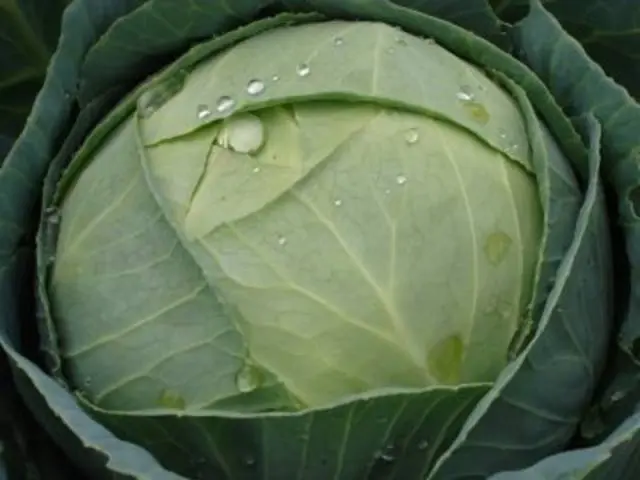
As a result of active growth, juicy-elastic heads of blue-greenish color ripen (as in the photo). The mass of the head can reach 4-8 kg. Atria is characterized by good preservation on the ground under various weather conditions and adequately tolerates transportation.
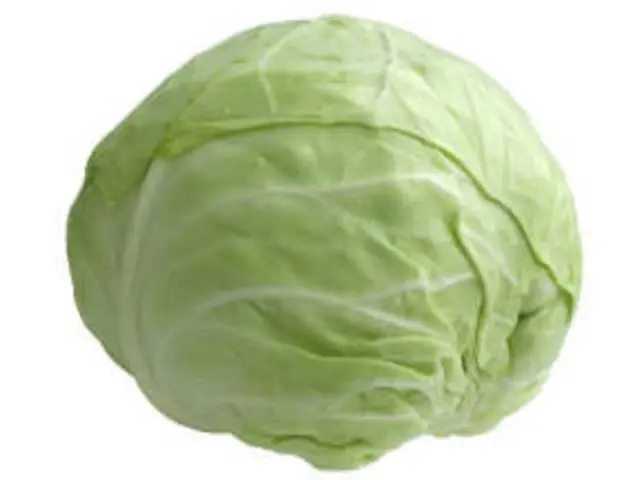
When provided with appropriate storage conditions, the vegetable retains excellent taste for about six months.
Planting and care
Two methods are used to grow Atria cabbage: sowing in the ground and planting seedlings. Considering the ripening time of this variety, it is recommended to immediately sow seeds in the southern regions in the summer cottage, and gardeners in the northern regions should give preference to planting seedlings.
Growing seedlings
In order not to waste time and get good seedlings of Atria cabbage, it is better to first make sure that the seeds germinate. First, the seed material is hardened: they are kept for 10-15 minutes in hot water, and then immersed in cold water for a minute. At night, the seed material is soaked in a solution of nitroammophoska and washed in the morning. To make sure the quality of the planting material, it is wrapped in a wet cloth and placed in a warm place for five days. The canvas must not be allowed to dry, so the fabric is periodically moistened. On the fifth day, you can check the germination of seeds. Unsprouted grains are simply thrown away.
For this, a special composition or solution of potassium permanganate is used. Such a preventive measure will protect the sprouts from infections and diseases.
Growing seedlings is carried out in several stages.
- A fertile soil mixture is being prepared. To do this, mix the earth, peat, clean sand. To provide seedlings with nutrition, it is also recommended to add superphosphate and ash.
- Holes (one centimeter deep) are marked on the surface of the moistened soil at a distance of a centimeter from each other.
- Sprouted grains are laid in the pits, covered with earth and lightly pressed. The box can be covered with a film and put away in a warm room (with a temperature not lower than +18˚ С).
- Seeds usually germinate in 4-5 days. At this stage of development, the optimum temperature for the growth of seedlings of the Atria variety is considered to be + 7˚ C. If this requirement is not observed and the seedlings are left warm, they may die.
- As soon as several leaves appear on the seedlings of Atria (approximately 9-10 days later), you can proceed to the stage of planting the sprouts in separate pots. A universal option as separate containers is a peat pot.

- The dishes are filled with soil containing mineral fertilizers. In order not to damage the seedlings when transplanting, it is advisable to use a stick or a teaspoon.
- In separate containers, Atria cabbage grows for 19-24 days. Ten days after transplantation, seedlings are hardened off. To this end, the containers are taken out into the street for a short time. Every day the period of stay of seedlings on the street is increased. Immediately before transplanting cabbage into open ground, it should be on the street for the whole day.
The most suitable period for planting seedlings in the garden is May 10-20. There is no longer a threat of night frosts, and the soil warms up to a suitable temperature.
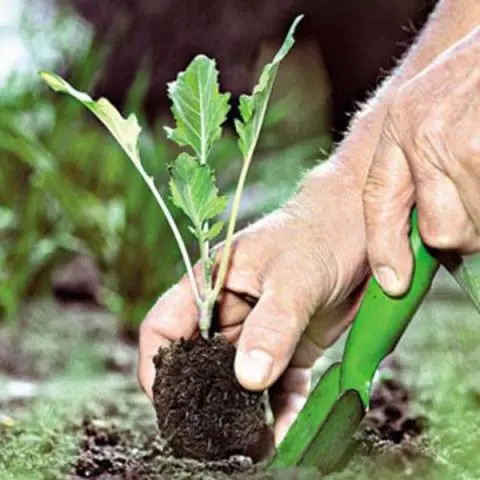
Watering cabbage
For confident growth and high-quality formation of the head of Atria, it is recommended to properly irrigate the crop. Cabbage is a moisture-loving plant. Therefore, for some time after planting, seedlings are watered every two to three days.
After 12-14 days, you can reduce the frequency to once a week.
Variety Atria at the stage of head formation especially needs regular watering. In order for the plant to grow normally, it is advisable to use warm water for irrigation, not lower than + 18˚ C.
An important procedure for caring for Atria cabbage is the constant loosening of the soil to ensure aeration of the roots.
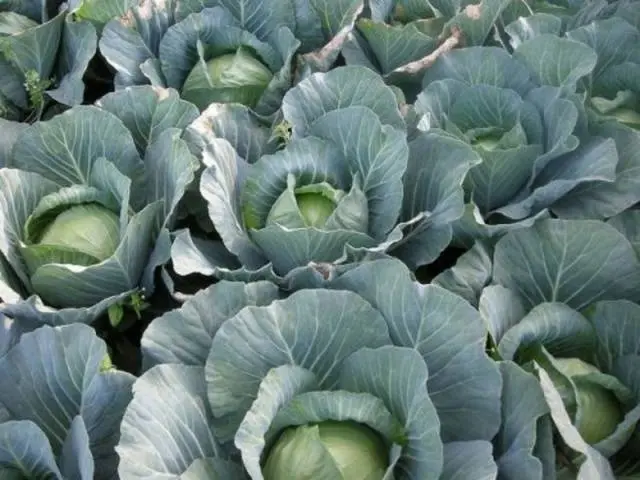
Soil fertilizer
To obtain a full and good harvest, Atria cabbage is regularly fed. Recommended soil fertilization schedule:
- 20 days after transplanting seedlings. The solution “Effekton” is used;
- ten days after the first feeding. Fertilizer “Kemir” is used;
- June – a mixture of mineral fertilizers is used (superphosphate and potassium sulfate);
- August – (about three weeks before the harvest of Atria, a solution of nitrophoska is introduced).
So that nutrient mixtures do not damage the root system of cabbage, fertilizers are applied to wet ground (it is advisable to choose a cloudy day).
Harvesting
If you properly harvest Atria cabbage and provide suitable storage conditions, then the heads of cabbage will lie perfectly all winter and early spring. A distinctive feature of the Atria variety is to gain juiciness during storage.
If Atria cabbage is not planned to be dug up, then a sharp knife will be needed to cut the vegetable. When harvesting, a fruit stalk 3-5 cm high is left. It is advisable to pick off the lower leaves immediately.
To ensure good preservation, vegetables are left in the fresh air for a while – so that the upper green foliage is attached.
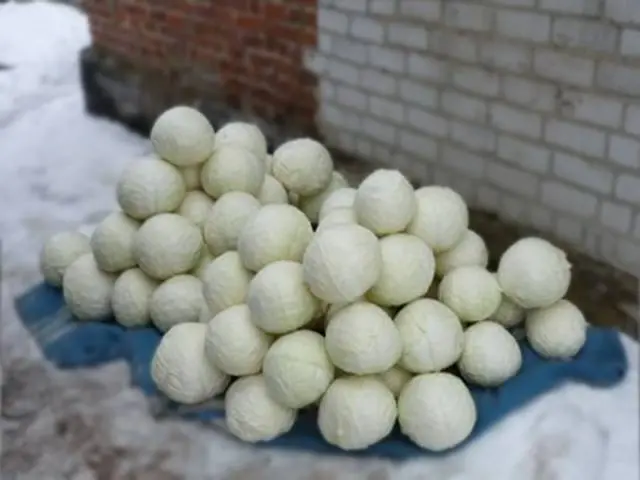
If Atria cabbage is dug up, then the root system is immediately thoroughly cleaned from the ground. Yellowed lower leaves break off. Heads of cabbage are also left in the garden to dry the roots and basal leg. The best way to store a vegetable in the basement is to hang a head of Atria cabbage by the root.
So that various diseases do not develop in the soil, the site is carefully cleaned after harvesting. The roots and basal legs of heads of cabbage are dug up, torn off lower leaves are collected.
Cabbage Diseases and Pests
Fusarium is a fungal disease that causes cabbage to wilt. Signs of the disease – the foliage turns yellow and fades. Heads are formed small and deformed. Diseased plants must be removed from the site. The remaining cabbage is pollinated with fungicides Benomyl, Tekto. As a preventive measure, it is recommended to carefully remove all plant residues from the soil. It is undesirable to plant cabbage in one area for several seasons in a row.
Turnip Mosaic is a virus. Affected vegetables are covered with light green spots. As a result of the disease, cabbage leaves fall off. The virus is carried by harmful insects (aphids, mites). Fighting the disease with insecticides is useless. Therefore, the main attention is paid to prevention: diseased plants are removed along with part of the soil, weeds are carefully weeded out, seeds of the Atria variety must be disinfected before planting.
The main pest of the crop is the cabbage aphid. The insect feeds on cabbage juice and gradually depletes the vegetable. Aphid colonies settle down on young cabbage in the spring. For the destruction of pests use Karbofos, Iskra. As a preventive measure, you can sow tobacco or plant garlic around the perimeter of cabbage planting – aphids do not tolerate strong odors.
Gardeners value Atria cabbage for unpretentiousness, high yield, good keeping quality, and excellent taste.










